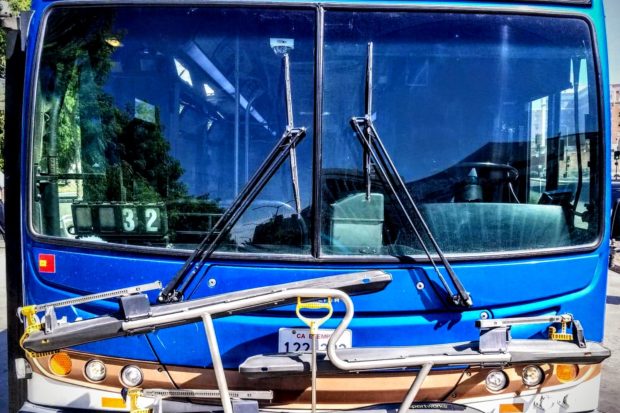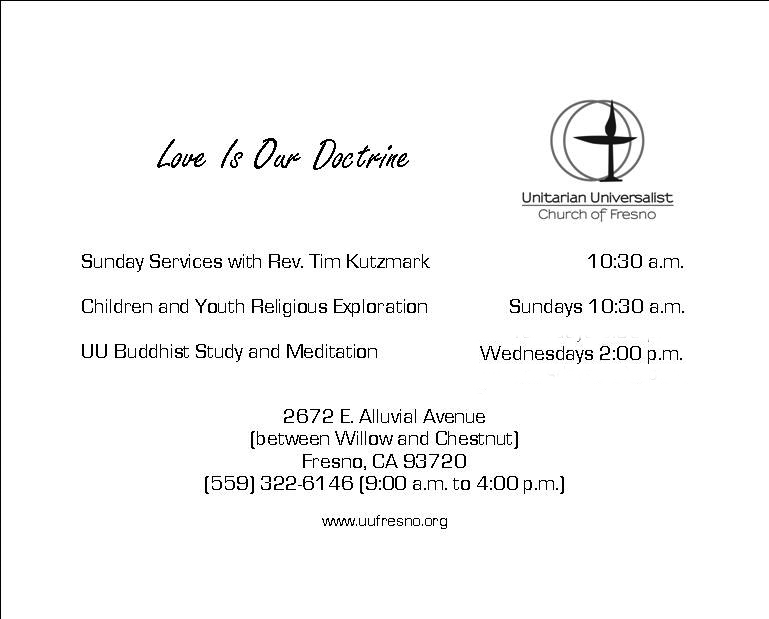
By I. smiley G. Calderon
When I first moved to Fresno just a year and a half ago, I didn’t know that the public transit system is referred to as the “FAX,” short for “Fresno Area Express.” I thought, how weird, why is Fresno stuck in the 1980s with references to facsimiles to describe its prized innovative citywide transportation system?
All over town, I saw “FAX” buses and bus stops, but I never could figure out what the acronym stood for, or if it even was an acronym. I knew that the “F” had to stand for “Fresno,” of course, but I couldn’t pinpoint what the “AX” part represented. Anyway, thank goodness for the Internet, where I looked up Fresno’s Department of Transportation and learned that the “AX” part of “FAX” doesn’t refer to any antiquated chopping tool at all but to the notion that Fresno’s bus system is extensive, modern and fast.
So, I thought I’d try it out.
After all, it only costs $1.25 (or $0.60 for seniors) to take the FAX, and that includes a transfer ticket to catch other connecting buses too to take me anywhere I want to go across town. I live downtown off of Tulare and Highway 41 in District 7 and needed to go to north Fresno to take care of some business, so I walked down the street to a nearby bus stop and took a seat.
Within minutes, the westbound 22 arrived and rescued me from the scolding Central Valley heat. Instantly, I felt the cool, soothing air conditioning across my hot, masked face. It felt great. I paid my fare, got my transfer ticket and took a seat.
The bus was pretty empty and there were a lot of seats to choose from, so I sat toward the front.
Because I’m not used to riding the FAX, I thought it would be good to sit near the bus driver in case I had any questions. The driver, a young woman with fine brunette hair wearing a face mask, was congenial and explained to me that since May 7, there were new rules to riding the bus that I should know about.
“First off,” she told me, “it’s good that you’re wearing that mask because if you didn’t have a face mask or a ‘protective facial covering’—a cloth mask, a paper mask or bandana or whatever—I wouldn’t have been able to allow you on board.”
“Really?” I blurted out loud. “So, you’re telling me that if I didn’t have this mask to wear, I wouldn’t be able to get on the bus? What if I couldn’t afford one?”
“Right,” she continued, “the city has decided that wearing a mask while riding the bus is mandatory, so that’s what we got to do now. So yes, to answer your question: if you didn’t have that mask on and then tried to get on the bus, I would ask you to get off, but if you didn’t, I would just stop the bus and contact the authorities to have you removed. It’s a city ordinance now, so we got to wear them whether we like it or not.”
Advertising


I wondered how this mask requirement to ride coincided or conflicted with FAX’s commitment “to ensuring that no individual is excluded from participation” as a federal grant recipient that is obligated to conform to Title VI of the Civil Rights Act of 1964 and its amendments. Listed on its Web site, the mission of FAX “includes the equal and equitable access” to its services, which includes riding its buses.
But the bus driver explained to me that every passenger over the age of 2 had to have some sort of face mask on unless they had a medical condition preventing them from wearing one. She told me that even bus drivers now had to wear facial coverings while on the bus, and they weren’t necessarily too happy about it either.
Until May 7, most FAX drivers didn’t wear them at all. But that was now all the past. Things had radically changed. In these unprecedented times, social health and safety concerns have now rightfully unbalanced convenient personal micro freedoms. The impending threat of the destructive spread of Covid-19 is to blame.
But not only that. The driver also told me that she could only carry 10 passengers on the bus at any given time. Wow, I thought, that’s a big change!
I quickly counted all the seats in the bus—36. So that means that every bus could potentially lose 26 paying customers at any given time for every route, and that doesn’t include the aisle spaces where passengers without seats could normally stand during their ride. That’s a lot of money lost.
Conspicuously empty buses circling through the city, traversing across town while hopeful masked passengers wait at crowded bus stops for the next ride could be the new norm.
I guess I was lucky to have gotten on a bus that didn’t have much demand during the day. I would have hated to be the 11th passenger ready to board my bus only to be denied entry. Especially in this god-awful Fresno heat. Especially while wearing a hot, sweaty mask. But, these are the times now and, apparently, that happens.
When buses hit that 10-person passenger limit, they are at full capacity now. Everyone else will just have to wait.
Yes, it’s an inconvenience—a big one. But, it’s not unlike the other safety measures imposed throughout the city or county nowadays.
Just try going to the grocery or hardware store on a busy day and your quick 10-minute “in-and-out” trip might take you more than an hour as you’ll have to wait in a long line outside the store in the sun (or under some shade, if you’re lucky) with other hopeful masked shoppers until earlier customers finish up their business and leave the store. It’s just business as usual in today’s coronavirus climate.
Despite these harsh times, the good news about FAX buses is that they operate on regular and dependable schedules, so you can count on them when you need them most. Some buses even pass through as frequently as every 10 minutes during peak times.
With more than 100 buses in the fleet and more than 250 bus drivers to service Fresno’s 17 routes, the FAX team is committed to keeping the city moving safely and on schedule during this crazy pandemic. And those are the facts—Fresno’s FAX.
*****
I. smiley G. Calderon is a Gen X Chicano and lifelong educator who spent a career in academia in Southern California but is most proud of being a father.
